Reasons #1 and #2 to order a hand made tree - materials and workmanship
We are no longer building saddle trees, but we have two videos about how Western saddles fit horses available on our westernsaddlefit.com website.
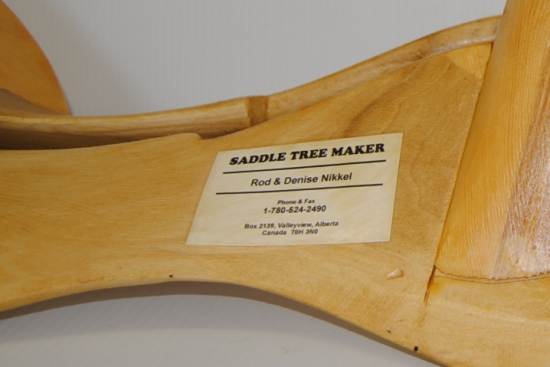
When we try to give people good reasons to order a hand made tree as opposed to a production tree, the two reasons we discuss first are always the superior quality of workmanship and materials used. The order of these two is interchangeable, so we will start with workmanship. This is higher for two primary reasons. The first is that every tree is individually made by Rod - no employees, no duplicating machines, no production line. Rod doesn't take preshaped parts off a machine to assemble them. He shapes them individually for every tree he builds so they fit together like they were made for each other - because they were! The second reason correlates closely to the first: It is our name, not a company name, that goes on each tree and our reputation that goes with every tree we ship out. With sixteen years and over 2100 trees behind us, that name on the tree still means a lot to us, and we stand behind our work.
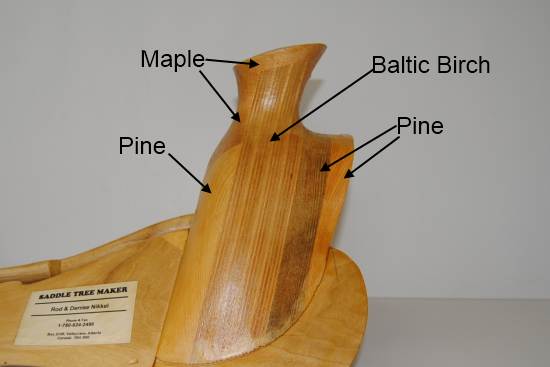
While there are a lot of specific areas we could point out about the quality of workmanship, we'll just stick with a few. First are the number of laminations in our forks and cantles, making sure the grain directions are running in different angles. (This is explained fully on our Construction Materials page.) This takes a fair amount of extra time, not just in gluing but cutting the pieces, planing and thicknessing them individually, edging them, gluing them edge to edge and then finally gluing the layers together. But it is worth it because it results in stronger forks and cantles.
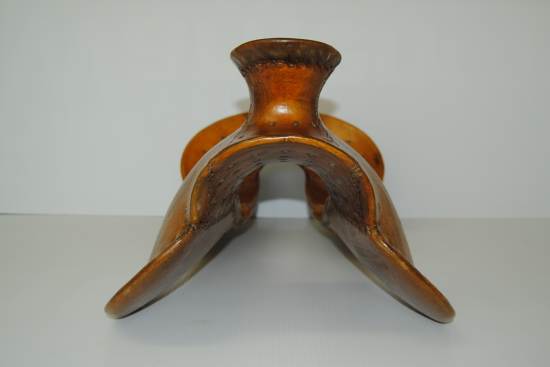
This is why the gullets on our forks can be thinner and more refined than production trees. Laminating the types of woods we use provides enough strength without needing the thickness that gives that "clunky" look to a fork. The thinner gullet also means your horn is closer to your horse with the same amount of clearance for the withers. (Please see our Avoiding the Withers page for more explanation.)
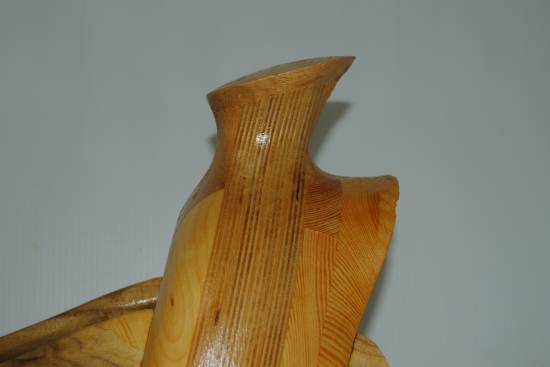
Our wood post horns are totally hardwood for strength, and built in as an integral part of the fork. The last thing that should ever break on a tree is the fork or the horn if they are carefully made of quality materials. Because they are individually shaped, we can make particular changes as requested. Our normal shaping leaves a refined looking horn with the neck shaped so the dallies run as close to the bottom as possible without leaving a sharp angle which makes a weak point. But if a customer wants a different look, it is easy for us to accommodate their request.
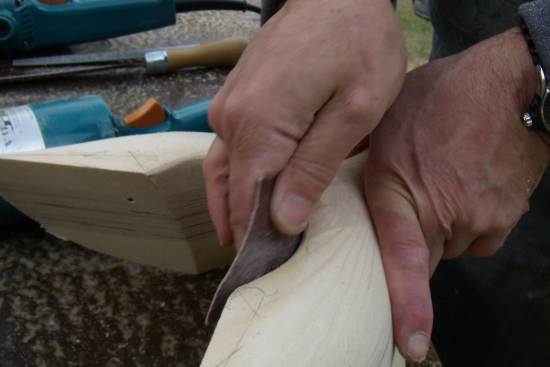
Because we shape everything the way we do - starting with the bandsaw, moving to the side grinder with carbide wood carving disc, then the sander, then the rasp, and finallly a bit of hand sanding - the wood is flat, even and smooth. There are no ridges or lumps in the wood to show through the rawhide - lumps and ridges which could cause the saddle maker grief.
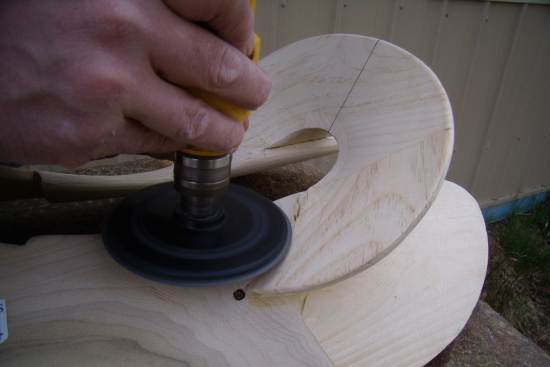
Our trees have cuts on the bar not just for the fork, but also for the cantle, securing the cantle in that notch on the bar and making the seat blend area of the tree much smoother and easier to build on. Rod also shapes this area after the tree is put together, making the shape that most of our customers find best as a base for their ground seat.
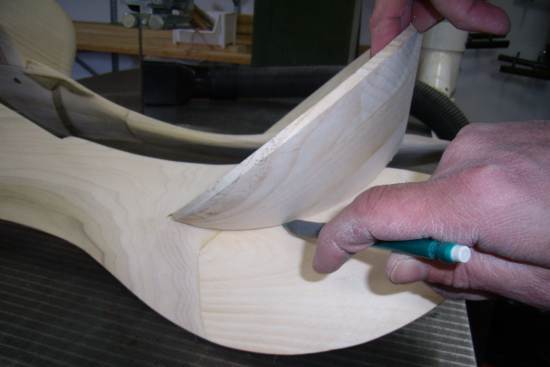
Because we are precise in our angles, cuts, jigs, etc. the parts of our trees fit snug and flush with each other - no bondo or putty to make them fit and no gapping allowing them to move and loosen up relative to each other.
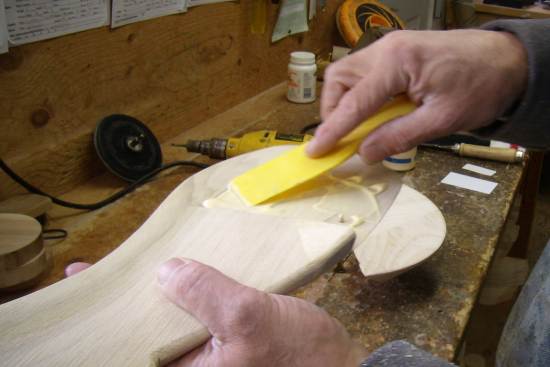
We also glue the parts together with very strong wood glue. (We have to make sure everything is right before we glue these parts together, because after about 10 minutes, we aren't getting two intact pieces of wood apart again. We know, because we've tried...) Holes are predrilled into the hardwood of the fork and cantle before the pieces are screwed - not nailed or stapled - together. The fork and cantle won't loosen their attachment to the bars when constructed this way.
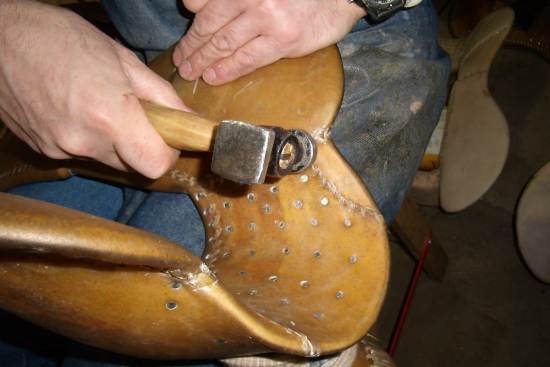
There isn't a way to automate rawhiding a tree yet, so every rawhide covered tree has to be hand sewn in place. However, things like quality of the stitching, type of lace, type and number of nails and how they are placed all affects how smooth, neat and refined the final tree is for the saddle maker to build on. Rod spends a lot of time babysitting the drying trees, pounding seams twice a day for a good week at least until they are dry enough to stay flat and resetting nails daily to every two or three days depending on how quickly the hide is changing thickness until the hide is fully dry. This leaves a smooth surface over the seams and ensures the hide is tight to the wood on concave areas like the cantle - no bulging out between nails.
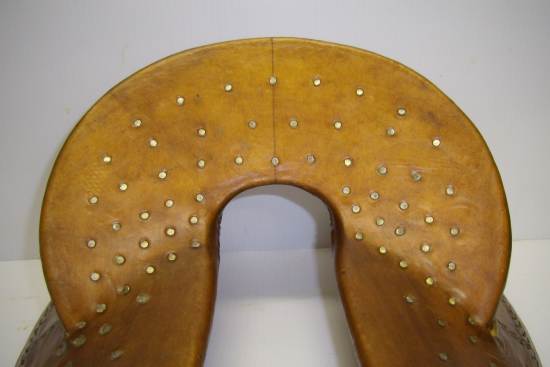
One of the things a lot of new customers comment on are the center lines on the horn, fork and cantle of our trees. Since each piece is individually laid out based on true horizontal and vertical lines, it is easy enough for us to keep these center lines throughout the building process and re-mark them with dark pen so they are visible on the final tree. Having center lines means the saddle maker doesn't have to take time and effort to find them, and he knows they really are the true center.
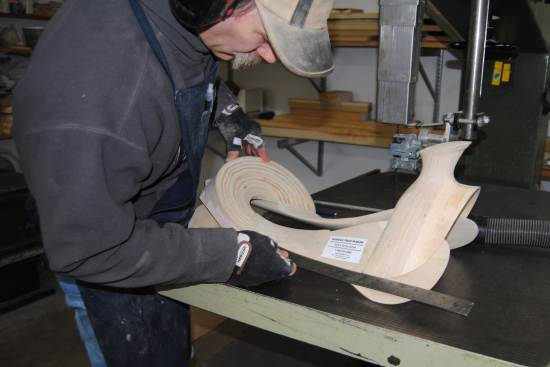
A second thing that is commonly commented on is the symmetry of the trees. Because of the way we mark out the trees and the checks and balances we put in place in how we actually do the building, our customers know that our cantles and forks are square on the bars, our bars are even with each other, and one side of the tree is the same shape as the other side of the tree. Patterns that fit one side can be flipped over and used on the other side without remodelling. All these things save the saddle maker time and make building the saddle that much easier.
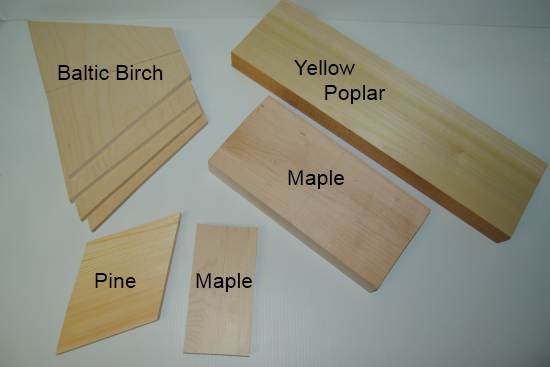
I have written about the materials we use pretty extensively on our Construction Materials page, so there isn't much point in re-writing what is already there. (Clicking the link will take you directly to that page.) Using different woods with different properties that are best for the different components of the tree (including hardwood in the fork) adds strength and durability you don't get with just one type of wood throughout.
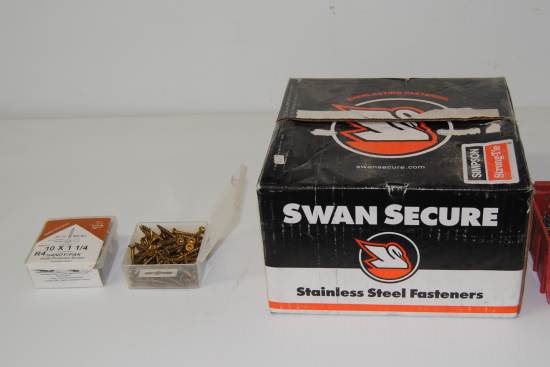
Something else I can add is the type of fasteners we use to put our trees together. GRK screws are top quality, and even in the large bulk boxes cost us about seven cents a piece for the size of screw we use, but we figure they are worth it. (We would like to use them to install the metal horns but they don't make them in that size, so we use others there.) The stainless steel nails aren't cheap either but, again, we feel they are worth the extra cost for the quality of tree we are building.
The end result of high quality of materials and workmanship is a stronger, smoother, easier to build on, longer lasting and better looking saddle tree, which translates into a stronger, more durable, better looking saddle. And that's just the first two reasons to get one of our trees. There will be more coming...
For more pictures of how we build our trees, we have lots of pages with lots of pictures in the Building a Tree section of our website.
